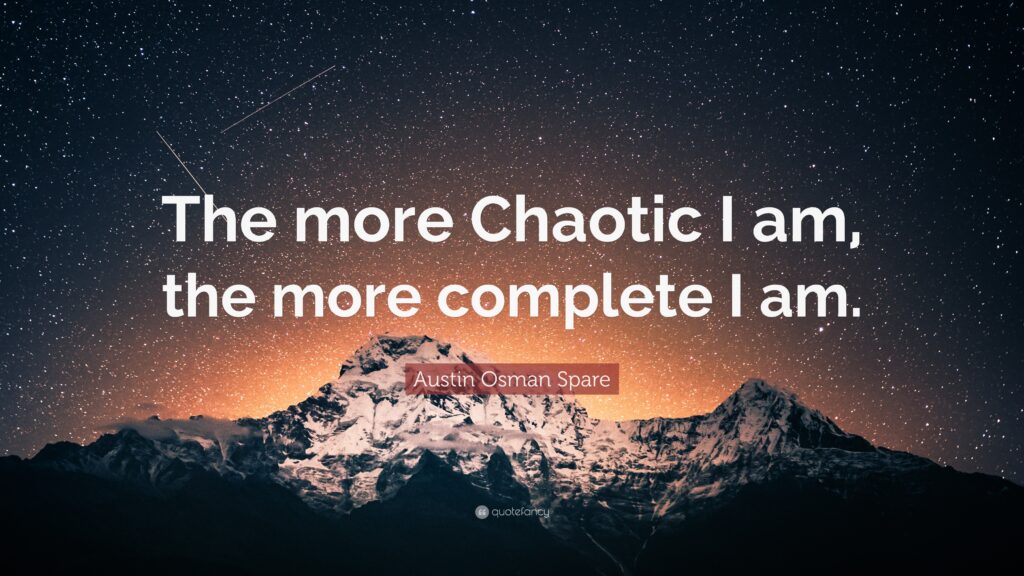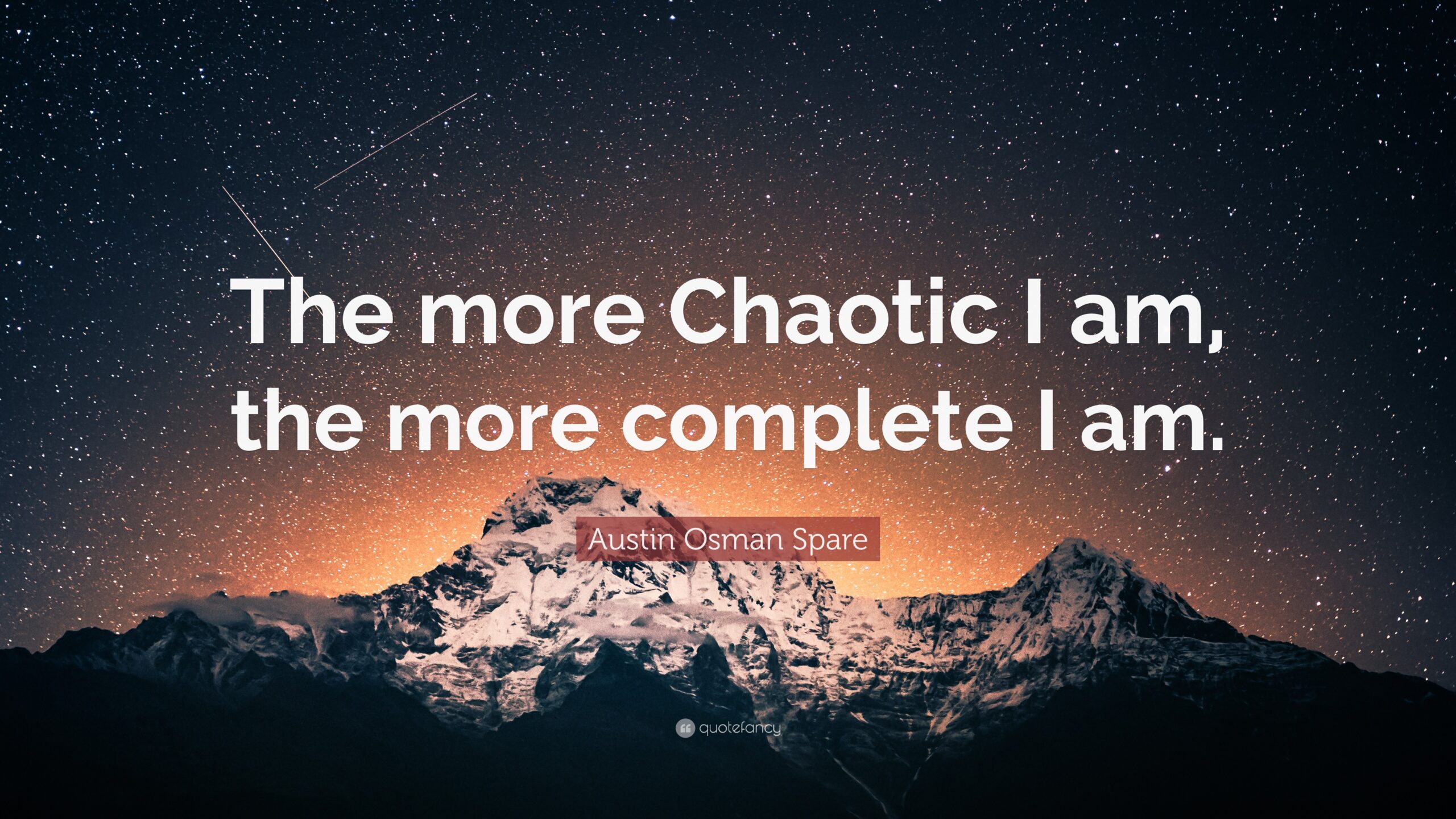
I Am Chaotic: Embracing the Beautiful Mess of Modern Life
In today’s fast-paced world, the phrase “I am chaotic” resonates with many. It’s a declaration, a confession, and sometimes, a badge of honor. We juggle multiple roles, navigate constant change, and strive for impossible standards. But is chaos inherently negative? Or can we find value, even beauty, in the midst of it?
Understanding the Nature of Chaos
Before diving deeper, let’s define what we mean by “chaotic.” It’s not simply being busy. True chaos involves a lack of order, predictability, and control. It’s the feeling that things are happening to you, rather than by you. This feeling can stem from various sources:
- External Factors: Demanding jobs, family responsibilities, unexpected emergencies, and societal pressures all contribute to a chaotic environment.
- Internal Factors: Procrastination, poor time management, perfectionism, and a lack of clear goals can amplify feelings of chaos.
- Environmental Factors: Living in a disorganized space, dealing with constant interruptions, and exposure to overwhelming information create a sense of being constantly overwhelmed.
When someone says “I am chaotic,” they’re often acknowledging the interplay of these factors in their life. They’re admitting that they don’t always have a handle on things, and that’s okay.
The Downsides of Chronic Chaos
While embracing some level of chaos can be liberating, chronic disorganization can take a toll on mental and physical health. The constant state of alert triggers the stress response, leading to:
- Increased Anxiety and Depression: Feeling out of control can fuel anxiety and contribute to feelings of hopelessness.
- Burnout: Constantly juggling multiple demands without adequate rest leads to emotional, physical, and mental exhaustion.
- Impaired Decision-Making: Stress impairs cognitive function, making it difficult to think clearly and make sound judgments.
- Relationship Strain: Chaos at home and work can spill over into personal relationships, leading to conflict and resentment.
- Physical Health Problems: Chronic stress contributes to a range of health issues, including high blood pressure, heart disease, and weakened immune system.
Recognizing these potential consequences is crucial for taking steps to manage the chaos in your life. [See also: Managing Stress in a High-Pressure Environment]
Finding the Silver Lining: The Upsides of Controlled Chaos
Believe it or not, there can be advantages to a certain degree of chaos. Consider these points:
- Increased Creativity: A chaotic environment can spark creativity by forcing you to think outside the box and find unconventional solutions.
- Enhanced Adaptability: Navigating unpredictable situations builds resilience and adaptability, making you better equipped to handle future challenges.
- Improved Problem-Solving Skills: Constant problem-solving hones your critical thinking skills and allows you to approach complex issues with greater confidence.
- Greater Appreciation for Order: Experiencing chaos firsthand can make you appreciate the value of structure and organization.
- A More Authentic Life: Trying to control every aspect of your life can be exhausting and ultimately unfulfilling. Embracing a bit of chaos allows you to live more authentically and spontaneously.
Saying “I am chaotic” can be an acceptance of your own humanity, acknowledging that perfection is unattainable and that imperfection can be beautiful. It’s about finding a balance between structure and spontaneity, control and surrender.
Strategies for Managing Your Chaotic Life
If you find yourself constantly saying “I am chaotic” and feeling overwhelmed, it’s time to implement some strategies to regain control. Here are a few suggestions:
Prioritize and Delegate
Not everything is equally important. Identify your priorities and focus your energy on the tasks that truly matter. Delegate tasks whenever possible, whether at work or at home. Don’t be afraid to ask for help. If you have too much to do, saying “I am chaotic” won’t solve the problem; taking action will.
Time Management Techniques
Effective time management is crucial for reducing chaos. Experiment with different techniques, such as the Pomodoro Technique, time blocking, or the Eisenhower Matrix (urgent/important). Find a system that works for you and stick with it. Even dedicating 15 minutes a day to planning can make a significant difference. When feeling overwhelmed, remember that “I am chaotic” doesn’t have to be your permanent state.
Create Routines and Rituals
Establishing routines and rituals provides a sense of structure and predictability in a chaotic world. Start with small, manageable habits, such as a morning routine or a bedtime ritual. These routines can help you feel grounded and centered, even when everything else feels out of control. A consistent routine proves “I am chaotic” is a temporary state, not a definition.
Declutter Your Physical and Digital Space
A cluttered environment contributes to a cluttered mind. Take time to declutter your physical and digital spaces. Get rid of unnecessary items, organize your files, and unsubscribe from unwanted emails. A clean and organized space can promote a sense of calm and control. If you feel “I am chaotic,” start by cleaning your desk.
Practice Mindfulness and Self-Care
Mindfulness and self-care are essential for managing stress and promoting well-being. Take time each day to engage in activities that you enjoy, such as reading, listening to music, spending time in nature, or practicing yoga. Even a few minutes of mindfulness meditation can help you calm your mind and reduce feelings of anxiety. Acknowledging that “I am chaotic” is the first step; self-care is the next.
Learn to Say No
Overcommitting yourself is a surefire way to create chaos. Learn to say no to requests that don’t align with your priorities or that will add unnecessary stress to your life. It’s okay to protect your time and energy. Saying “I am chaotic” is often a result of not setting boundaries.
Seek Professional Help
If you’re struggling to manage the chaos in your life, don’t hesitate to seek professional help. A therapist or counselor can provide you with tools and strategies for coping with stress, managing your time, and improving your overall well-being. Recognizing that “I am chaotic” and seeking help is a sign of strength, not weakness.
Embracing the Imperfect: Finding Peace in the Chaos
Ultimately, managing a chaotic life is about finding a balance between control and acceptance. It’s about recognizing that perfection is unattainable and that it’s okay to embrace the messiness of life. Saying “I am chaotic” doesn’t have to be a negative statement. It can be an acknowledgment of your own humanity, your resilience, and your ability to navigate the unpredictable nature of the world. It’s about finding beauty in the imperfections, learning from the challenges, and growing stronger in the process.
The next time you think or say “I am chaotic,” remember that you are also resilient, adaptable, and capable of finding order amidst the disorder. Embrace the beautiful mess, and trust that you have the strength to navigate whatever life throws your way. Instead of fighting the chaos, learn to dance with it.
So, embrace your chaotic self. You are not alone. Many of us feel like “I am chaotic.”
Realizing “I am chaotic” is simply acknowledging a current state, not defining your entire being.
The admission, “I am chaotic,” can be the starting point for positive change.
Even if you feel “I am chaotic,” remember your inherent worth and potential.
When you say “I am chaotic,” consider it a call to action for self-improvement and finding balance.

